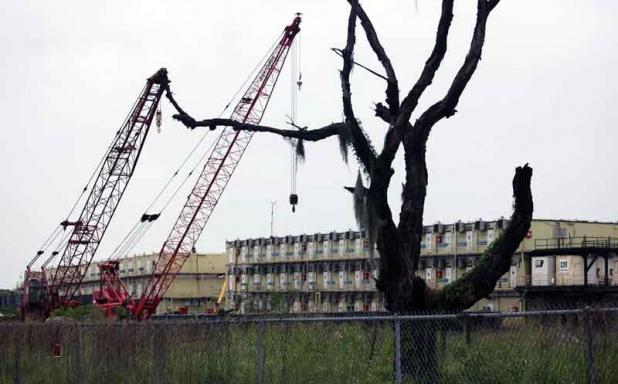
From the Editor: A cruel month in St. Mary
Poet T.S. Eliot wrote that April is the cruelest month. Then again, he didn’t hang out in St. Mary Parish this March.
It must be said that March 2017 will not be remembered as a happy chapter in St. Mary’s economic history.
But it must also be said that while the parish may be down — and any community in the oil patch knows what that’s like — it’s not out.
At the start of the month, there seemed to be signs of a break in the two-year slump in oil prices for which the loss of a fifth of St. Mary’s jobs is generally blamed. The price of west Texas intermediate crude started the month on an upswing, reaching $54 a barrel and spawning hopes that the long dip was over.
The price then slipped back to $47 by mid-month, although it was back near $50 by Friday.
The U.S. Census Bureau released its annual population estimates for 2016 earlier this month, and the news there was bleak, too. St. Mary is believed to have lost more population last year and has now shed about 4 percent of its residents since the 2010 Census. The component bearing most of the blame there is domestic out-migration: Far more people are moving out than are moving in.
This week, PHI Inc. confirmed that it will close its Amelia-Morgan City facility and move those operations to Houma. Aside from the loss of something like 40 jobs here, local hotels could lose up to 40 percent of their early-week business, which comes from the oilfield people before or after they’re ferried to work sites by PHI helicopters.
Not a good month, was it?
March was also the occasion for your writer to take a week of vacation in my hometown in east central Missouri. That trip was a reminder of what St. Mary sometimes takes for granted.
When I was a kid 40-50 years ago, it seemed that everybody in my hometown had a dad who drove to McDonnell Douglas or the auto plants in St. Louis. Moms worked in shoe factories. Many dads ran a few head of cattle or raised a few hogs on a few acres outside after coming home from a two-hour commute on weekends.
The shoe factories are just empty brick shells now — at least the ones still standing. They were victims of the move of U.S. manufacturing offshore, a trend that started years before NAFTA or the WTO.
McDonnell Douglas, which played a big role in America’s victory in the space race, is gone now, swallowed up in a merger with Boeing. The Chrysler plant that once covered acres in southwest St. Louis County has been razed.
Farming is still big around my hometown, but a lot of the land is now occupied by homes for people who have moved out of the city.
Compare all that to what you see on a drive down U.S. 90 and La. 182 in the east end. You begin to see how much St. Mary has going for it.
Cranes stretch upward from everywhere. If there’s an oil slump, there are also places like Cameron where plenty is still going on. And the parish remains a player in shipbuilding, with Conrad, Swiftships and more.
The industrial infrastructure here is eye-popping for a parish of only 52,000 people. Some of it has moved away, but much remains. The same goes for the talents of its people.
Better days are ahead for St. Mary.
Bill Decker is the editor of The Daily Review. Reach him at bdecker@daily-review.com.
